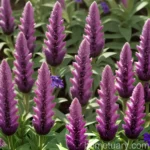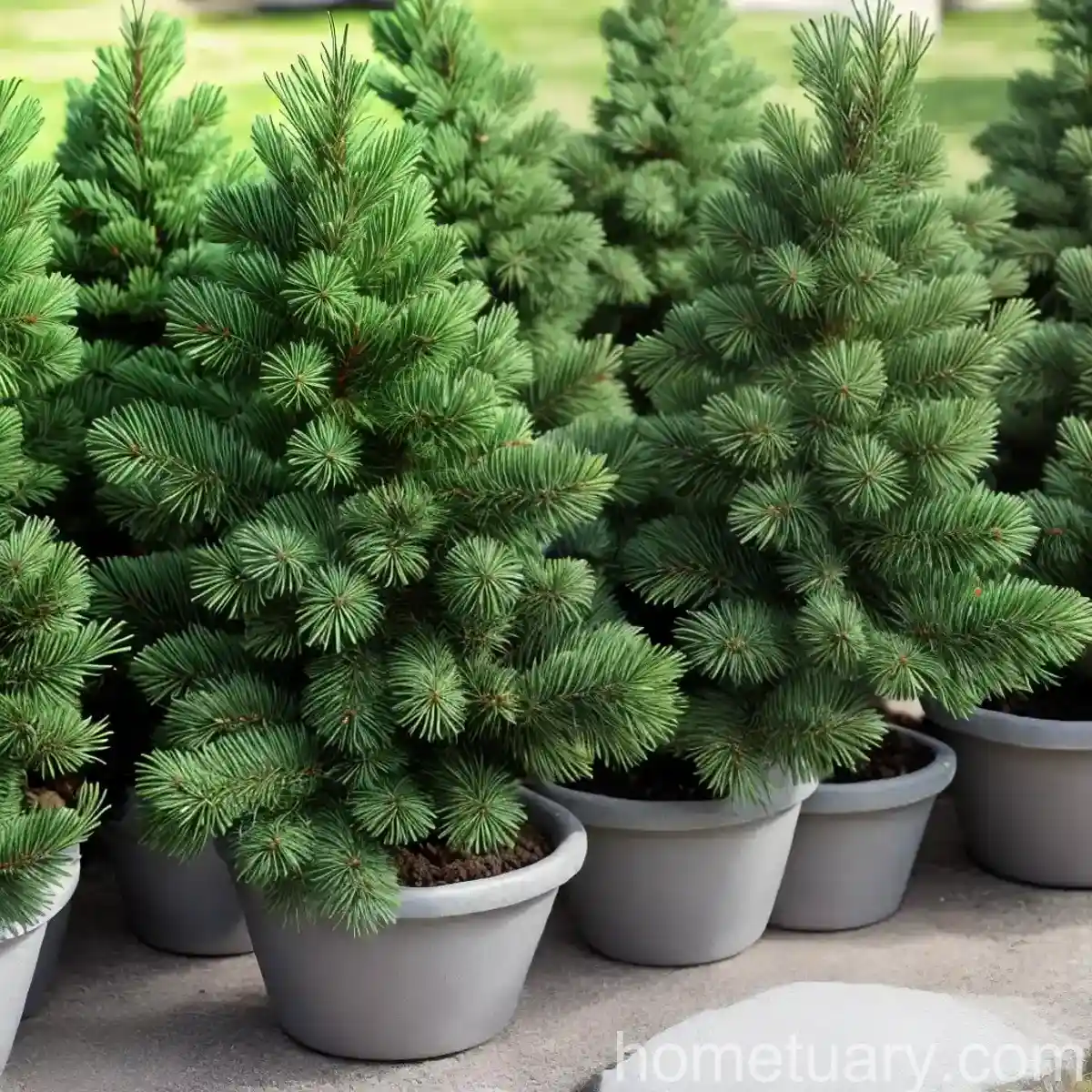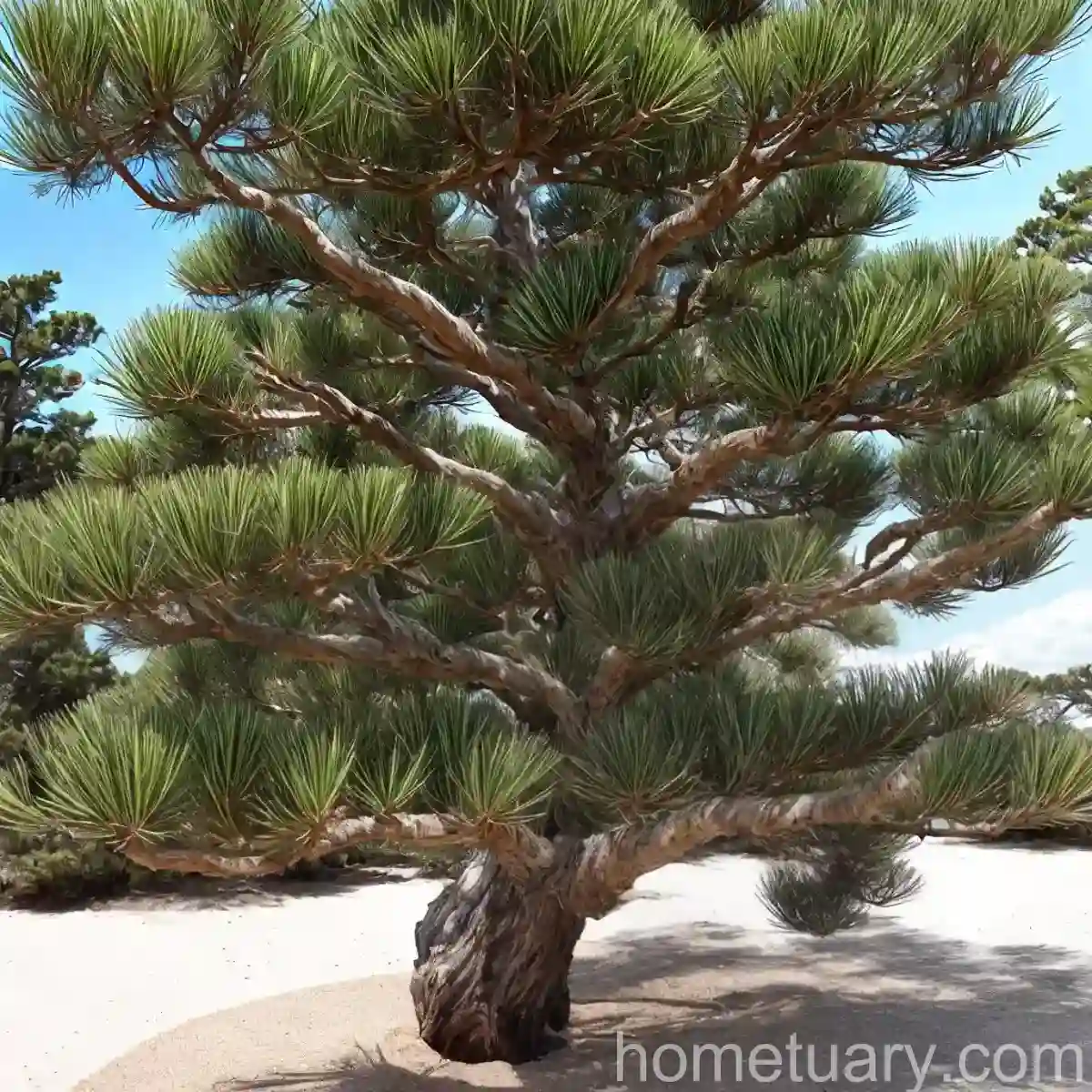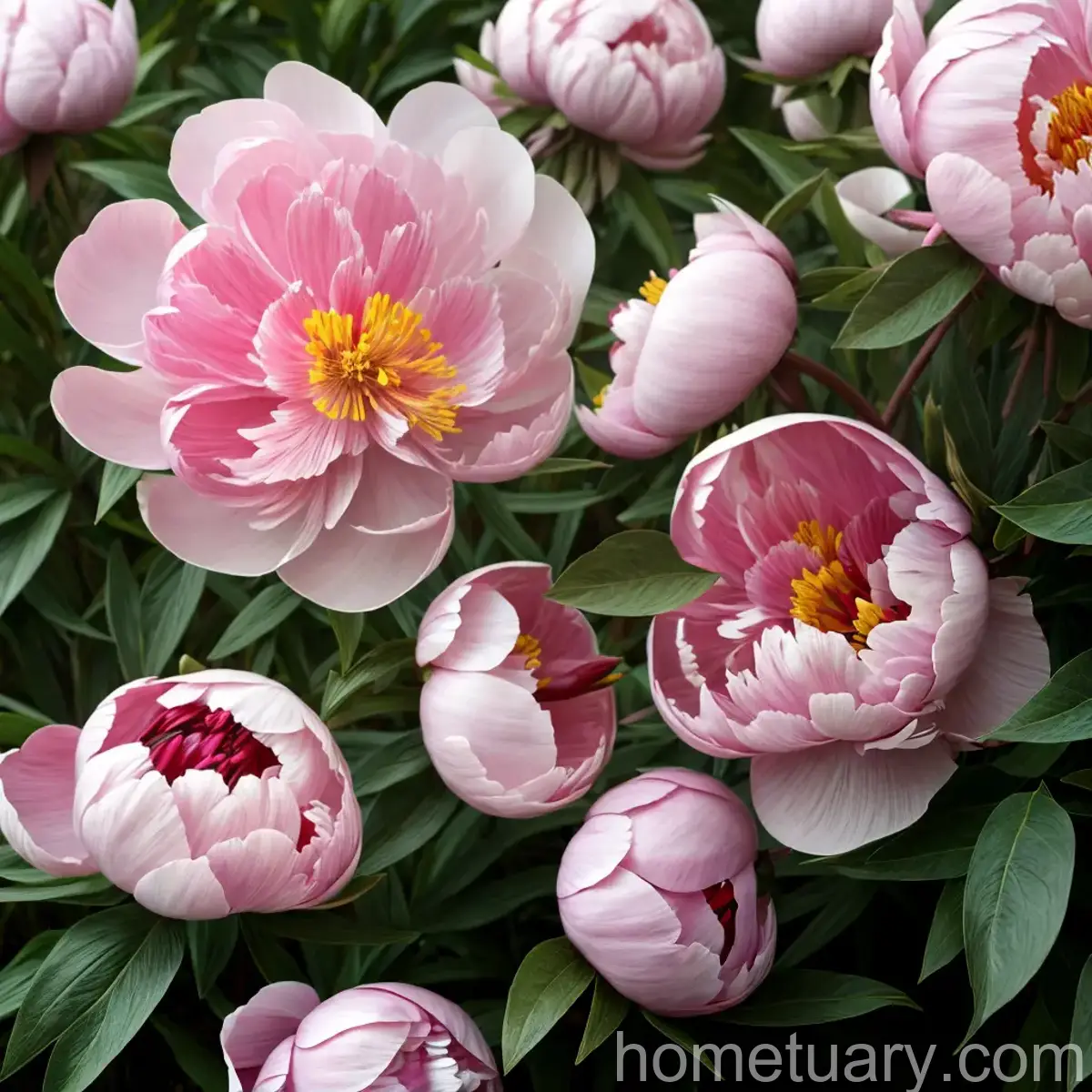Beardtongue (Penstemon canescens): A Native Plant in Focus
Beardtongue, scientifically known as Penstemon canescens, is a delightful perennial plant that is native to North America. With its beautiful tubular flowers and resilience in harsh conditions, it has become a favorite among gardeners, landscapers, and conservationists alike. This article will delve into the various aspects of the beardtongue plant, including its culture, uses, care, and more.
What is the Beardtongue Plant (Penstemon canescens)?
The beardtongue, or Penstemon canescens, is a species of flowering plant in the plantain family, Plantaginaceae. It is commonly referred to as the eastern gray beardtongue due to its native range in the eastern United States, primarily in the central and eastern parts of the country. This herbaceous perennial is known for its upright growth habit, slender leaves, and striking tubular flowers that bloom in various shades of pink and purple.
Key Takeaways – Beardtongue (Penstemon canescens)
Before we delve deeper into the various aspects of the beardtongue plant, let’s explore some key takeaways about this captivating species:
- Scientific Name: Penstemon canescens
- Common Name: Beardtongue, eastern gray beardtongue
- Plant Type: Herbaceous perennial
- Native Range: Eastern United States
- Flower Color: Pink, purple
- Attributes: Drought-tolerant, wildlife-friendly, low-maintenance
- Growing Season: Spring to fall
- Attracts: Pollinators such as bees and hummingbirds
- Uses: Landscaping, native plant gardens, wildlife habitats
Now that we have a basic understanding of the beardtongue plant, let’s explore its culture, uses, and the essential factors that contribute to its successful growth.
Culture
The successful cultivation of the beardtongue plant relies on understanding its cultural requirements, including water, sunlight, soil, and other essential elements. By providing optimal growing conditions, gardeners can ensure the health and vitality of this native perennial.
Water
Beardtongue is renowned for its drought tolerance, making it a valuable addition to water-wise landscapes and gardens in regions prone to dry conditions. While established plants can withstand periods of limited rainfall, adequate moisture is crucial during the initial stages of growth and during prolonged dry spells.
- Watering Tips:
- Water young plants regularly to promote establishment.
- Once established, water deeply but infrequently to encourage deep root growth.
- Mulching around the base of the plant helps conserve soil moisture.
Sunlight
As a native plant accustomed to the diverse growing conditions of its natural habitat, the beardtongue thrives in full sun to partial shade. Adequate sunlight is essential for promoting robust growth and a profusion of vibrant flowers.
- Sunlight Requirements:
- Plant in a location that receives at least 6 hours of direct sunlight per day.
- In hotter climates, partial shade during the hottest part of the day can benefit the plant.
Soil
The beardtongue plant exhibits a degree of adaptability to different soil types, provided they offer good drainage. It is crucial to understand the soil preferences of this species to create an environment conducive to its growth.
- Ideal Soil Conditions:
- Well-drained soil is essential to prevent waterlogging and root rot.
- Sandy loam or loamy soils with a slightly acidic to neutral pH are suitable.
- Incorporating organic matter into the soil enhances its structure and fertility.
Fertilizer
Given its adaptability to nutrient-poor soils, the beardtongue generally does not require heavy fertilization. However, modest applications of balanced fertilizer can support its growth and flowering performance.
- Fertilization Tips:
- Apply a balanced, slow-release fertilizer in spring, following the guidelines on the product label.
- Avoid over-fertilizing, as this can lead to excessive foliage at the expense of flowers.
Uses
The beardtongue plant offers a myriad of uses in various gardening and landscaping contexts, showcasing its versatility and ecological value. From promoting biodiversity to adding aesthetic appeal, its uses are diverse and far-reaching.
Gardening and Landscaping
As a native perennial, the beardtongue holds significant appeal for gardeners and landscaping enthusiasts seeking to cultivate sustainable, wildlife-friendly environments. Its outstanding attributes make it a valuable addition to the following settings:
- Native Plant Gardens: Incorporate beardtongue into native plant gardens to celebrate the beauty and ecological significance of indigenous flora.
- Wildlife Habitats: Create wildlife-friendly gardens and natural areas with the inclusion of beardtongue to attract and sustain pollinators such as bees and hummingbirds.
- Xeriscapes: Utilize the drought tolerance of beardtongue in water-wise or xeriscape landscapes, where it thrives with minimal irrigation.
Conservation and Restoration
With its status as a native plant species, the beardtongue plays a crucial role in conservation efforts aimed at preserving natural biodiversity and restoring degraded landscapes.
- Native Plant Conservation: Contribute to the conservation of native flora by integrating beardtongue into habitat restoration projects and conservation areas.
- Erosion Control: Utilize the dense root systems of beardtongue to stabilize soil and prevent erosion in natural and urban landscapes.
Aesthetics and Functional Benefits
Beyond its ecological contributions, the beardtongue plant offers visual appeal and functional benefits that enhance the overall appeal and functionality of different spaces.
- Aesthetic Value: Enjoy the stunning display of tubular flowers ranging from delicate pinks to rich purples that adorn the plant throughout the growing season.
- Low-Maintenance Landscapes: Incorporate beardtongues into low-maintenance landscapes and gardens, as their resilience reduces the need for intensive care.
Now that we have explored the culture and uses of the beardtongue plant, let’s move on to the essential care guidelines required for its successful growth and long-term health.
Beardtongue Care
Cultivating beardtongue (Penstemon canescens) involves implementing care practices tailored to its specific requirements. By understanding the key aspects of its care, gardeners can foster the growth and vitality of this enchanting perennial.
Pruning
Pruning plays a pivotal role in maintaining the vigor and aesthetics of the beardtongue plant. Proper pruning practices contribute to improved flowering, prevent disease, and promote a tidy growth habit.
- Pruning Guidelines:
- Remove spent flower spikes to encourage prolonged blooming and prevent self-seeding.
- Prune back the plant in late fall or early spring to promote new growth and maintain its shape.
Propagation
Taking advantage of various propagation methods allows gardeners to expand their collection of beardtongue plants or share them with fellow gardening enthusiasts.
- Propagation Techniques:
- Seeds: Collect seeds from mature plants and sow them in a suitable growing medium. Provide optimal conditions for germination and seedling development.
- Division: Divide established clumps of beardtongue in early spring or fall to create new plants. Ensure each division has an adequate root system and several healthy shoots.
Container Popularity
The adaptable nature of beardtongue plants makes them well-suited for container gardening, offering a plethora of opportunities for creative and functional applications.
- Container Gardening Tips:
- Select a large, well-draining container that accommodates the plant’s root system and provides ample space for growth.
- Utilize a quality potting mix tailored to perennial plants to ensure adequate moisture retention and drainage.
Common Diseases and Pests
While the beardtongue plant is relatively resistant to pests and diseases, it is essential to be aware of potential issues and proactive measures for prevention and management.
Disease Diagnosis
Beardtongue may occasionally succumb to certain diseases, including fungal infections and bacterial issues, which can impact its health and aesthetics.
- Common Diseases:
- Powdery Mildew: Identify powdery, white spots on the leaves and stems, often occurring in humid conditions.
- Leaf Spot: Recognize dark, irregular spots on the foliage, indicating the presence of leaf spot diseases.
Common Pests
Though generally resilient, beardtongue plants may encounter pest-related challenges that necessitate vigilance and targeted intervention for effective pest management.
- Pest Identification:
- Aphids: Monitor for clusters of small, soft-bodied insects on new growth and flower buds, which can lead to distorted growth and the transmission of plant viruses.
- Spider Mites: Watch for stippled or discolored foliage, indicating the presence of spider mites, particularly in dry, dusty conditions.
Botanist’s Tips
Incorporating insights from botanical expertise can enrich the cultivation and appreciation of the beardtongue plant, offering valuable guidance and perspectives on its ecological significance and horticultural potential.
Fun Facts
Delving into the unique characteristics and ecological interactions of the beardtongue plant unveils fascinating aspects that enhance our understanding and admiration for this native species.
- Pollinator Attraction: Beardtongue flowers attract a diverse array of pollinators, including bees, butterflies, and hummingbirds, adding to the vibrancy of the garden.
- Natural Habitats: In the wild, beardtongue can be found gracing prairies, open woodlands, and savannas, where it contributes to the ecological tapestry of these environments.
Links to External Resources
For further exploration and in-depth understanding of the beardtongue plant and its associated topics, consider engaging with reputable external resources:
- Native Plant Societies and Organizations: Connect with local or national organizations dedicated to native plant conservation and gardening for valuable insights and resources.
- Botanical Gardens and Arboretums: Visit botanical gardens and arboretums that showcase native plant collections, where you can learn about and appreciate beardtongue and its natural companions.
Conclusion
The beardtongue, or Penstemon canescens, stands as a captivating emblem of native plant beauty and ecological significance. Its adaptability, resilience, and aesthetic allure make it a valuable asset for gardening, landscaping, and conservation efforts. By nurturing an understanding of its culture, uses, and care, gardeners and enthusiasts can foster thriving communities of beardtongue plants, contributing to the preservation and appreciation of native flora for generations to come.
In the tapestry of native plants, the beardtongue remains a steadfast and alluring presence, enriching natural landscapes and human experiences alike.















